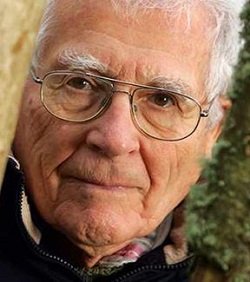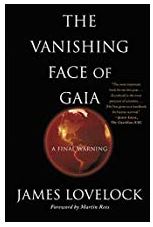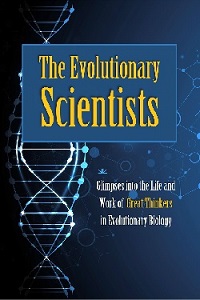|
TRANSLATE THIS ARTICLE
Integral World: Exploring Theories of Everything
An independent forum for a critical discussion of the integral philosophy of Ken Wilber
 David Christopher Lane, Ph.D.
Professor of Philosophy, Mt. San Antonio College Lecturer in Religious Studies, California State University, Long Beach Author of Exposing Cults: When the Skeptical Mind Confronts the Mystical (New York and London: Garland Publishers, 1994) and The Radhasoami Tradition: A Critical History of Guru Succession (New York and London: Garland Publishers, 1992). David Christopher Lane, Ph.D.
Professor of Philosophy, Mt. San Antonio College Lecturer in Religious Studies, California State University, Long Beach Author of Exposing Cults: When the Skeptical Mind Confronts the Mystical (New York and London: Garland Publishers, 1994) and The Radhasoami Tradition: A Critical History of Guru Succession (New York and London: Garland Publishers, 1992).If there's a singular topic Integral students need to be educated on it is evolutionary theory, given their frequent but uninformed use of the term "evolution". These short biographical chapters about evolutionary theorists have been written by different philosophy students of professor David Christopher Lane. (FV)
THE EVOLUTIONARY SCIENTISTS
Glimpses into the Life and Work of Great Thinkers in Evolutionary Biology
Coyne|
Crick|
Darwin|
Dawkins|
Diamond|
Dobzhansky|
Eldridge|
Gould|
Haldane|
Hamilton |
Lamarck|
Lovelock|
Mayr|
Mendel|
Monod|
Spencer|
Trivers |
Wallace |
Weismann |
Williams |
E.O. Wilson
James LovelockRania Serena SoetirtoIn the late 1960s, the widespread presence of chlorofluorocarbon or CFC was discovered in the air. The discovery started in a vacation home on the west coast of Ireland when British medical researcher, James Lovelock, grew curious about the haze surrounding his home. He sought to find out whether the haze was a natural phenomenon or the result of human activity. For this purpose, Lovelock developed the electron capture detector, which became the first machine to detect CFC in the atmosphere. Lovelock discovered that the haze surrounding his home was indeed man-made due to the presence of CFC, but he also noticed that even on clear days, CFC is still present. Lovelock's findings were critical as it led other scientists to discover the harmful impact that CFC has on the planet, mainly that CFC causes the destruction of the ozone layer that protects Earth from ultraviolet radiation.  James Ephraim Lovelock Famous for his contributions in the field of environmental science, James Lovelock is known for being an advocate for the planet in the ensuing climate change crisis. Other than his groundbreaking electron capture detector, Lovelock is famous for formulating the Gaia hypothesis, a theory that explains Earth's nature as a single self-regulating system. To this day, Lovelock is still the leading scientist in the field of environmental science as well as the most outspoken on the ensuing climate crisis. James Ephraim Lovelock was born on July 26, 1919 in Letchworth Garden City, United Kingdom, to a working class family. Lovelock's mother, like most working class people at the time, believed that a “good education” would provide opportunities for her children to rise in society, so she encouraged Lovelock to move to the local grammar school as early as possible. At the age of nine, Lovelock moved to Strand school before he finished his primary education. Lovelock was a precocious and bright child, but he hated his time at grammar school as it restricted him from any individuality. In 1938, Lovelock's school days ended when he received a job interview as a laboratory assistant; his experience played a large role in shaping him into the scientist that he is today. His work also provided him with funding as he could not afford to go to college after graduating high school. In 1948, Lovelock received his postgraduate doctoral degree in medicine at the London School of Hygiene and Tropical Medicine. In 1961, he began working as an independent scientist. Throughout his lifetime, Lovelock has garnered both acclaim and controversy. Lovelock began his career in cryopreservation, the process of preserving cells and living organisms in extremely low temperatures. In 1954, Lovelock participated in a team that successfully thawed frozen specimens, making his methods highly influential in the field of cryonics. In the 1970s, Lovelock and Microbiologist, Lynn Margulis, formulated the Gaia Hypothesis, a theory which Lovelock is most famous for today. Essentially, the Gaia hypothesis argues that all organisms and their inorganic surroundings are closely linked on Earth to form one self-regulating system, which explains the Earth's capability to sustain life. The argument lies heavily on the nature of a planet's atmosphere. If a planet has no life, then its atmosphere would be at constant equilibrium as there is no reactivity from its gases to produce energy. Lovelock noticed that all the reactive gases on Earth (with the exceptions of its rare gases that are unreactive) are either produced or processed by living organisms. These reactive gases include oxygen, carbon dioxide, and nitrogen, which are all essential for survival. The relationship between earth's living organisms and their inorganic surroundings are inseparable as the gases essential for survival are produced by the organism itself. This explains the atmosphere's ability to sustain life on Earth. Upon its release, the Gaia hypothesis became a subject of much controversy. The theory is widely accepted by environmentalists, but is it not accepted by a number of scientists who criticize it to be more theological than scientific. Lovelock is also controversial for his fervent support on nuclear power as a potential renewable energy. He believes that nuclear energy should replace coal and fossil fuels as these two sources cause more harm to the planet. Lovelock argues that nuclear power stations do not emit any carbon dioxide and the yearly waste of a 1,000 MW power plant is only enough to fill the size of a medium-sized car which is insignificant compared to the amount of carbon dioxide produced each year from the burning of fossil fuel. Lovelock asserts that the false fears on nuclear energy are caused by misleading evidence given by governments for political reasons. In his book, The Vanishing Face of Gaia: A Final Warning, Lovelock compares the Chernobyl disaster in 1989 to an incident in Bhopal, India, where an accident at a pesticide plant in 1984 caused the release of forty tons of methyl isocyanate gas into the air. The accident in Bhopal is cited to be the world's most disastrous industrial disaster with a death toll of more than thirty-eight hundred people, but because of its location in the east, it did not garner as much media attention. The Chernobyl disaster received more attention because of its affiliation and implications to Europe and western countries, proving Lovelock's theory that the public fear on nuclear energy is a misguided fallacy. Outspoken on how we conduct life on Earth, Lovelock is adamant that every organism is essential for the continuity of the planet. Each species has a role to play in Earth's self-regulating system, which is in accordance to his Gaia hypothesis. Lovelock's concern is placed on human activity in the tropics and coastlines, which are pushing a great number of animal and plant species to extinction. In his book, Gaia: A New Look at Life on Earth, Lovelock writes that twice the present human population of the world could be supported without uprooting other species from their natural habitats. Lovelock asserts that the planet has taken too much damage from human neglect and abuse. In 2016, during an interview with the British daily newspaper, The Guardian, Lovelock predicts that before the end of the 21st century, eighty percent of the planet's total population would be wiped out.[1] In 2019, Lovelock has reached the age of a hundred years old. He has authored more than 200 scientific research papers and has been elected as a Fellow of the Royal Society in 1974. He currently lives with his wife, Sandy, in a coastguard cottage in Dorset, United Kingdom. Notes[1] Decca Aitkenhead, "James Lovelock: ‘Before the end of this century, robots will have taken over’" , www.theguardian.com, 30 September 2016. (Actuallly that prediction about "nature's revenge" he made in 2008; his current prediction is that robots will have taken over before nature catches up on us. FV) Further Reading1. Gaia: A New Look at Life on Earth, Oxford University Press; Subsequent edition (November 23, 2000) 2. The Vanishing Face of Gaia, Basic Books; First Trade Paper Edition edition (April 27, 2010)   MSAC Philosophy Group
The theory of evolution has a long history. However, it was not until Charles Darwin and Alfred Russel Wallace discovered that the wide variety of species we presently see were largely the result of natural selection did evolutionary studies have a solid, scientific basis. In the past one hundred and sixty years, a number of eminent biologists have contributed to our understanding of how complex life forms emerged from simpler, more rudimentary ones.
Comment Form is loading comments...
|